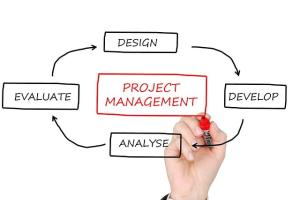Project Integration Management - Methods, Applications, Advantages

Definition
Integration management is a project performance domain that focuses on coordinating and integrating various project processes, activities, and components to ensure a cohesive and successful project outcome. It involves bringing together different aspects of the project to create a unified approach and ensure alignment with project objectives.
Methods:
Develop Project Charter:
The project charter establishes the project's high-level objectives, scope, stakeholders, and initial requirements. It provides the authorization to start the project and serves as a reference throughout the project lifecycle.
Develop Project Management Plan:
The project management plan includes subsidiary plans for scope, schedule, cost, quality, resources, communications, risk management, and procurement. It outlines how these areas will be managed, monitored, and controlled during the project.
Direct and Manage Project Execution:
This involves implementing the project management plan by coordinating and supervising project activities, resources, and team members. It ensures that work is carried out according to the defined scope and objectives.
Monitor and Control Project Work:
Project progress is tracked, monitored, and compared against the project management plan. Deviations are identified, and corrective actions are taken to keep the project on track and within the defined constraints.
Perform Integrated Change Control:
Proposed changes to the project are reviewed, assessed for their impact on the project's scope, schedule, cost, and other aspects, and decisions are made on their approval or rejection.
Close Project or Phase:
Formal project closure involves finalizing all project deliverables, conducting project reviews, documenting lessons learned, and transitioning the project's outputs to the appropriate stakeholders or operational teams.
Types:
- Project Integration Strategy: This involves developing a strategy to integrate various project processes, methodologies, and components based on the project's unique characteristics, stakeholder requirements, and organizational context.
Advantages:
- Alignment: Integration management ensures that all project processes and activities are aligned with the project's objectives, scope, and stakeholder expectations.
- Cohesiveness: It creates a unified and cohesive approach to project management, allowing for better coordination, communication, and control.
- Minimized Risk of Misalignment: By integrating project components, the risk of misalignment between different project elements is reduced, leading to a higher chance of project success.
Disadvantages:
- Complexity: Integration management can be complex and requires careful planning, coordination, and monitoring to ensure effective integration across all project aspects.
- Time and Effort: Developing and managing the project management plan and implementing integrated change control processes can be time-consuming and require additional effort.
- Resistance to Change: Implementing integration management practices may face resistance from team members or stakeholders who are resistant to change or prefer working in silos.
Applications:
- Large-scale Projects: Integration management is particularly critical in large-scale projects that involve multiple stakeholders, complex deliverables, and significant interdependencies.
- Cross-functional Projects: Projects that require coordination and collaboration across different functional areas or departments within an organization can benefit from integration management.
Examples:
- Construction Project: Integration management in a construction project involves coordinating architectural design, engineering, procurement, construction, and quality assurance activities to ensure seamless project execution.
- Software Development Project: Integration management in software development involves integrating activities such as requirements gathering, design, coding, testing, and deployment to deliver a fully functional software solution.
References:
- "A Guide to the Project Management Body of Knowledge (PMBOK Guide)" by Project Management Institute (PMI)
- "Project Management: A Systems Approach to Planning, Scheduling, and Controlling" by Harold Kerzner









